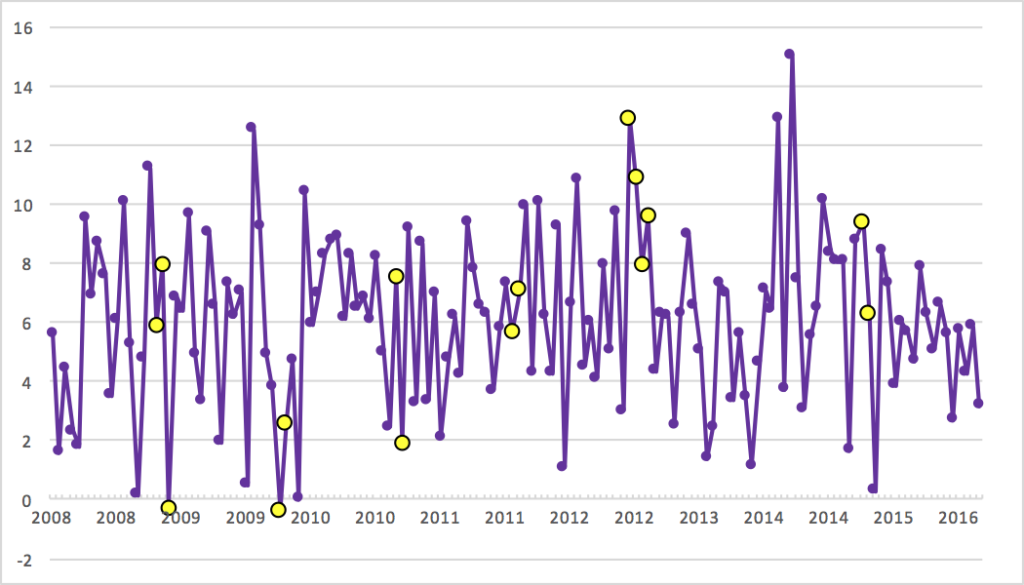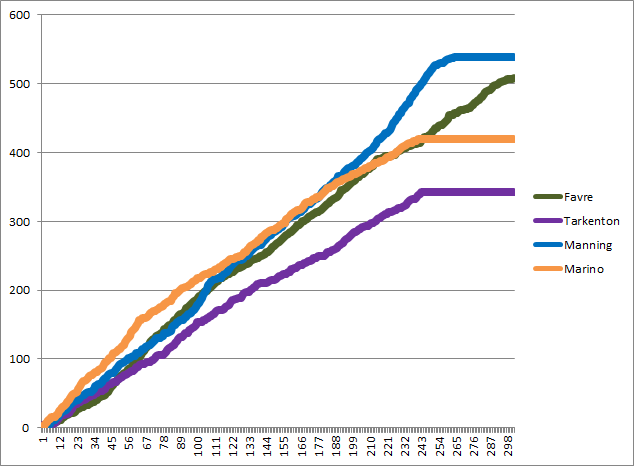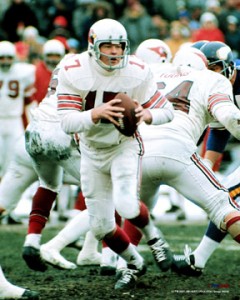Matt Ryan leads the NFL in the following categories:
- Touchdown Rate, at 6.8%
- Yards per Attempt, at 9.3
- Adjusted Yards per Attempt, at 10.0
- Yards per Completion, at 13.3
- Passer Rating, at 115.5
- Net Yards per Attempt, at 8.21
- Adjusted Net Yards per Attempt, at 8.90
Ryan also ranks 3rd in passing yards and 3rd in passing touchdowns, despite leading in the rate versions of those categories, because Ryan only ranks 18th in pass attempts, and that’s despite not missing any games. The Falcons rank 27th in pass attempts. The Falcons rank 12th in rushing attempts, but only rank 25th in total plays.
Why is that? Well, Atlanta only ranks 27th in offensive drives. And why is that? One reason is that the Falcons defense isn’t good at getting off the field. The Falcons defense is allowing 6.1 plays per drive, at a 2:45 minute clip per drive, and resulting in 2.18 points per drive. All three of those metrics place Atlanta in the bottom quarter of the league, as does Atlanta’s 41.6% third down rate. Even worse, the Falcons have the worst red zone defense in the league.
The Falcons have also scored 5 return touchdowns this year, which negated five potential possessions for the offense. But there’s another reason Atlanta has so few drives and plays this year: the offense is really, really good. Just 55 drives have ended in a punt or turnover this year, the fewest in the league. The Falcons are also the only team to have over half of its drives end in a score. If Atlanta had more three-and-outs, they’d have more drives and maybe more plays, but completed passes keep the clock running.
If the Falcons had a better defense, Ryan would probably have more pass attempts this year, and he might be producing some better raw numbers. If he had 5,200 passing yards, it would be clearer to the average fan that this is a historically great season. And because Atlanta tends to run near the goal line, the team ranks 3rd in rushing touchdowns, which depresses Ryan’s touchdown totals (though provides some assistance to his yards per attempt numbers). Instead, we have to focus on his rate numbers. So, which league-leading rate number is the best? [continue reading…]








